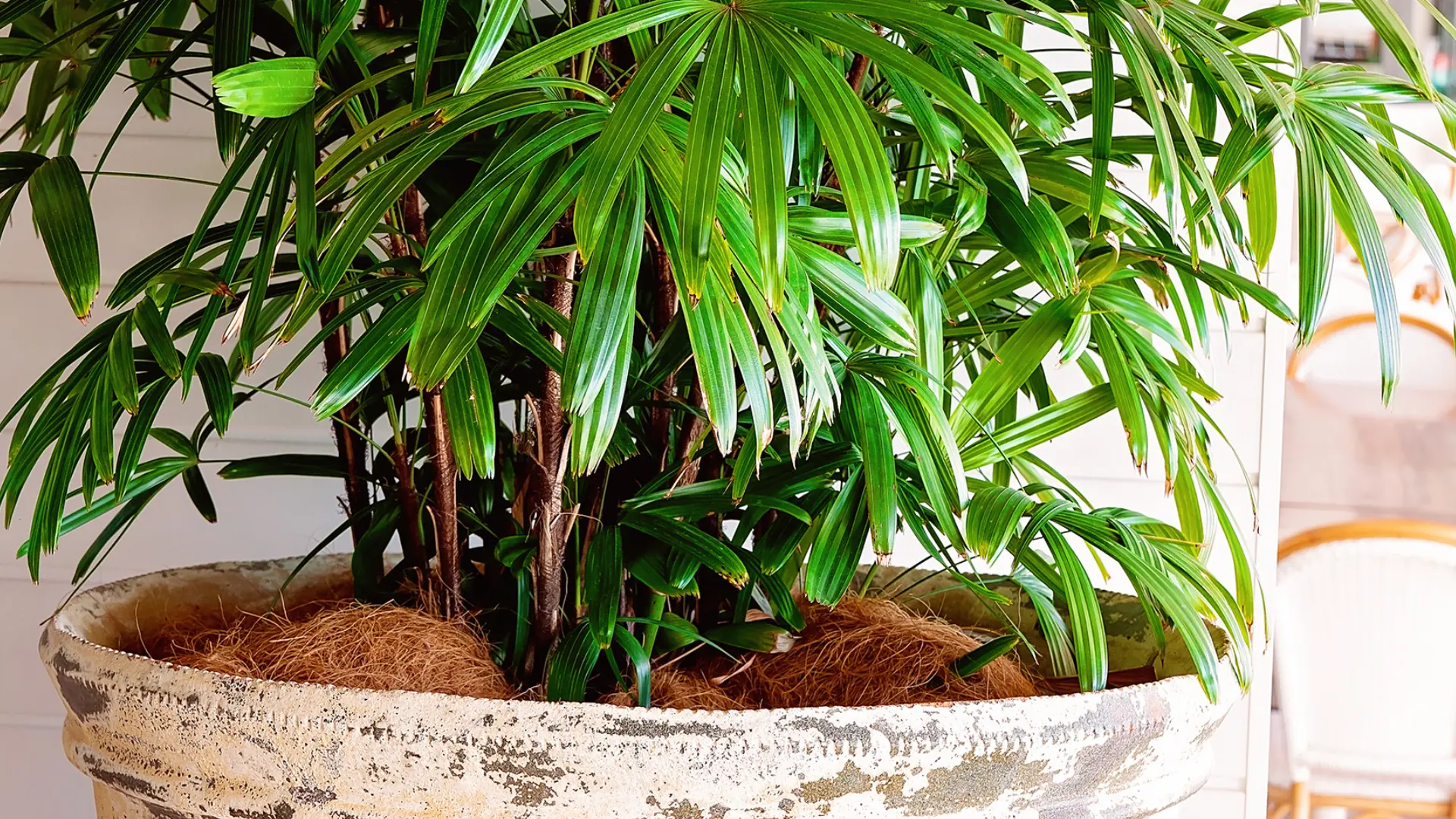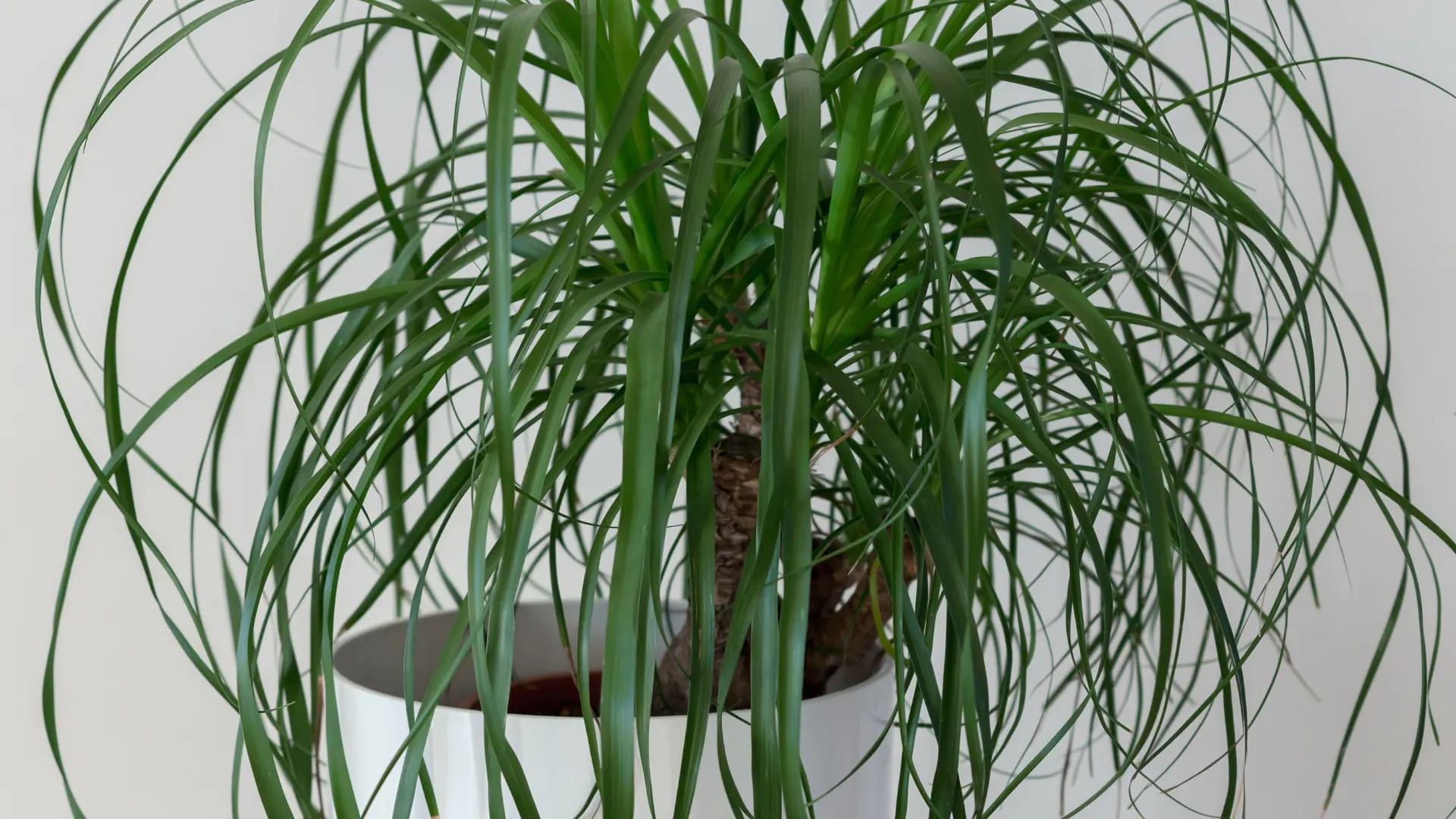The inviting arched fronds of a palm tree can provide a permanent vacation vibe in our homes. However, these light-loving plants frequently have more lax requirements indoors, and they can suffer despite our best efforts. This article will examine the causes of your indoor palm tree’s demise and offer suggestions for reviving it.
How Can I Revive a Dying Palm Tree?
Your palm tree may have lost a significant number of leaves or fronds. Even if they remain on the tree, they might need to look healthier. As a result, the leaves begin to wither and become extremely dry to the touch. The leaves are described as crispy by some gardeners.
The fronds rarely grow more than a few millimeters. You regrettably end up with a frizzled or fried-looking tree. You will need to figure out the solution as soon as possible, whether the problem is frizzle top or another one that affects your indoor palm tree. This is the section for you.
Palm Leaf Tips Turning Brown

Underwatering and low humidity are the causes of browning leaf tips on indoor palm trees. Indoor palm trees prefer high humidity and need the soil to be consistently moist and distributed evenly. Low humidity causes the leaves to lose moisture faster than the roots can absorb, resulting in the browning of the leaf tips.
How to Fix
To revive a palm tree with dying brown leaves:
- Place the palm pot in a water basin for about 10 minutes, ensuring that the root ball is completely submerged. This water works best to hydrate the soil so that the roots of your indoor palm can access the water they require if water is dripping off the soil’s surface and is perpetually underwatered.
- Always give indoor palms a generous soak once every seven days. To ensure the soil is evenly moist, always wait until you see excess water seeping from the pot’s base. If you water too lightly, the soil will only become moist in the top inch, while the roots are much deeper and cannot access moisture. Watering the palm every seven days ensures the proper soil moisture balance to keep it hydrated and healthy without running the risk of root rot.
- To increase the humidity, mist the palm leaves every other day. By misting the palm’s leaves, you can create a humid microclimate that resembles the humidity of the palm’s natural habitat. By doing this, the leaves lose less water and don’t oxidize.
- Keep palm trees between 65°F and 75°F (18°C and 23°C), with the nighttime temperature being about 10°C lower. This is usually the temperature range that palm trees prefer, and the steady temperature ensures consistent soil moisture. Keeping indoor palm trees away from air currents and indoor heating sources is advisable.
- Give the soil a good soak if you have been fertilizing too frequently or with too much concentration. Wait until the following spring to apply any additional fertilizer. Always use a fertilizer explicitly designed for palm trees, as they have all the nutrients needed at the proper concentration to maintain healthy plants and prevent brown leaf tips.
Palm Leaves Turning Brown
Tropical palm tree species that grow in the understory of a tree canopy, in bright light but shielded from direct sunlight, are most frequently used as indoor plants. When growing palm trees indoors, a lot of bright, indirect light is best. The leaves may begin to turn brown if there is not enough light.
Depending on the particular species of palm, the color of the leaves can change from green to yellow to brown when exposed to excessive direct sunlight.
How to Fix
- For indoor palms to have sufficient energy for growth while avoiding sunburn, bright indirect light is the ideal balance. Move the palm to a room with more light if the room has a little bit of low light (due to a north-facing window).
- Maintain a temperature range of 65°F to 75°F (18°C to 23°C), 10° cooler at night, and increase humidity by regularly misting the leaves. During active growth, water the soil once every seven days. All of these elements work to reduce the stress that is causing the palm tree’s leaves to turn brown by simulating the conditions of its natural environment.
- Your indoor palm is most likely fine if the lower leaves turn brown and die. The older leaves lower on the tree begin to turn brown as the palm tree ages and prioritizes new growth over maintaining them.
Palm Leaves Turning Yellow

Overwatering and inadequate drainage are the most frequent causes of indoor palms turning yellow. Indoor palm trees require soil that drains well because they cannot tolerate soggy soil around the roots. Damp soil creates room for root rot, which causes the palm tree’s leaves to turn yellow and appear to be dying.
Lack of nutrients in the soil can also cause indoor palm leaves to be yellow. Larger palms that have been in the same container for a long time are more likely to experience this because active growth can cause the roots to deplete the soil of nutrients.
How to Fix
If dry soil is causing your palm tree to turn yellow, then:
- Place the pot of the palm tree in a bowl of water for 10 minutes, making sure the root ball is immersed.
- Mist the leaves of the palm tree daily.
- Keep the palm out of the direct path of air currents from air conditioning.
- Water your indoor palms with a great soak daily during active growth and every 10-14 days in the fall and winter. This contributes to achieving the ideal soil moisture balance that palms require to remain healthy (evenly moist but not soggy).
If the leaves of your palm tree are turning yellow due to wet soil, then:
- Reduce watering to once per week.
- Replace the potting mix if the soil is moist and is only slowly draining. Take the palm out of the container and add about 30% perlite or horticultural grit to the soil to help replicate the well-draining soil characteristics that palm trees enjoy in their natural environment.
- Check the palm roots for disease when removing them from the pot. The roots of a healthy palm tree are firm and white. If the roots are sick, they will typically be brown, look rotten, and have a mushy texture and a foul smell. The palm does not regenerate if all of the roots are infected.
- If only a portion of the roots is rotting, use a sharp pair of pruners to cut any diseased roots back to healthy growth. Wipe the pruner blades with a disinfectant-soaked cloth to prevent fungal pathogens from spreading from infected roots to somewhat healthy growth. Re-pot the palm in fresh potting soil that has been improved with grit for drainage, and give it plenty of water.
- To prevent excess water from collecting around the pot’s base and leading to root rot, make sure the palm is planted in a container with drainage holes. It would be best if you regularly emptied any saucers, trays, or decorative external water pots.
Indoor palms can also turn yellow due to overexposure to direct sunlight or because the roots have depleted the nutrients in the soil, if so:
- Place the palm tree in a bright area, away from direct sunlight.
- To avoid yellowing leaves from nutrient deficiency, fertilize palm trees once in the spring and once in the summer.
Drooping Palm Tree

Low humidity and drought stress are typical causes of indoor palm drooping. Drooping leaves are the first sign that the soil is too dry or that the humidity is causing the palm leaves to lose too much moisture, resulting in a wilting, drooping appearance.
How to Fix
To revive a drooping indoor palm, ensure the potting soil is evenly moist, mist the leaves to increase humidity and maintain a temperature range between 65ºF to 75ºF (18ºC to 23ºC) and locate the palm in bright light, and the leaves should recover.
FAQs
Do palm trees regenerate after being cut?
Where and the type of tree you cut determines whether palm trees will regrow after being cut. If yours has a single trunk, cutting it where it grows at the crownshaft or tip will kill it. The opposite is true for palms with multiple trunks. These trees will endure and grow root stems. The original trunk, however, is gone.
Do I need to cut the brown palm leaves?
Yes, but make sure only to cut off or remove the brown portion. Leave the frond if it still has some of its healthy colors so that your palm tree can continue to benefit from it. If the frond tips have turned brown, you may choose to remove them. Know that if you don’t find the source of the problem, it will also affect the other fronds.
Perhaps your indoor palm needs to receive more sunlight. Browning of the leaves can also result from underwatering your tree. If you correct whatever improper behavior caused the leaves to turn brown, you won’t need to prune the plants as frequently.
